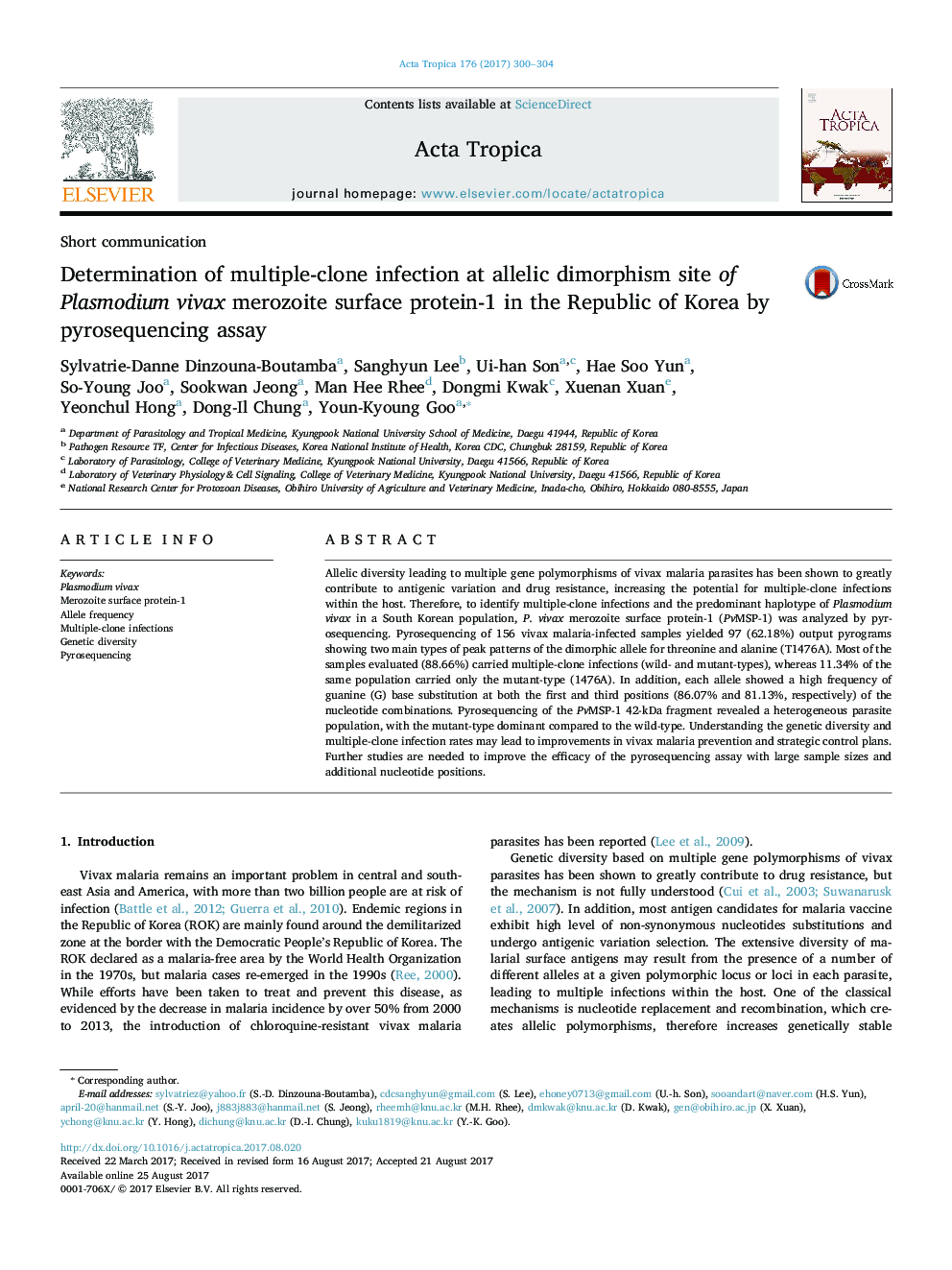| Article ID | Journal | Published Year | Pages | File Type |
|---|---|---|---|---|
| 5671062 | Acta Tropica | 2017 | 5 Pages |
â¢This is the first P. vivax genotyping using pyrosequencing in a Korean population.â¢Multiclonal infection was observed in 88.66% of vivax malaria-infected Koreans.â¢Allelic dimorphism showed a predominance of mutant- over wild-type parasites.
Allelic diversity leading to multiple gene polymorphisms of vivax malaria parasites has been shown to greatly contribute to antigenic variation and drug resistance, increasing the potential for multiple-clone infections within the host. Therefore, to identify multiple-clone infections and the predominant haplotype of Plasmodium vivax in a South Korean population, P. vivax merozoite surface protein-1 (PvMSP-1) was analyzed by pyrosequencing. Pyrosequencing of 156 vivax malaria-infected samples yielded 97 (62.18%) output pyrograms showing two main types of peak patterns of the dimorphic allele for threonine and alanine (T1476A). Most of the samples evaluated (88.66%) carried multiple-clone infections (wild- and mutant-types), whereas 11.34% of the same population carried only the mutant-type (1476A). In addition, each allele showed a high frequency of guanine (G) base substitution at both the first and third positions (86.07% and 81.13%, respectively) of the nucleotide combinations. Pyrosequencing of the PvMSP-1 42-kDa fragment revealed a heterogeneous parasite population, with the mutant-type dominant compared to the wild-type. Understanding the genetic diversity and multiple-clone infection rates may lead to improvements in vivax malaria prevention and strategic control plans. Further studies are needed to improve the efficacy of the pyrosequencing assay with large sample sizes and additional nucleotide positions.
